Top 7 Apps Built with React Native: A 2024 Perspective
- Jarvy Sanchez
- Feb 15, 2024
- 9 min read
Updated: Feb 22, 2024

This development language will be a popular choice in 2024 for companies looking to streamline their hybrid development process and reach a wider user base with their mobile app. In this blog post, we will showcase the top 7 apps built with React Native.
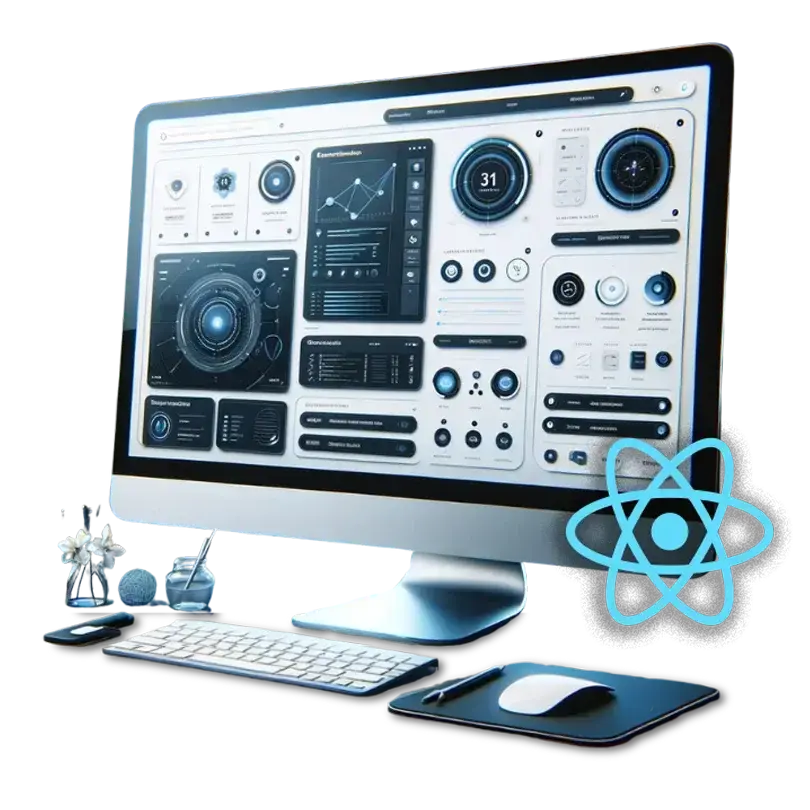
What is React Native?
It is an open-source framework developed by Facebook in 2015 that remains a solid choice for mobile app development in 2024, thanks to its unique approach of combining JavaScript, Typescript, and React modern features.
Developing with React Native allows you to craft high-quality mobile applications for both iOS and Android platforms from a single, unified codebase, and reduces the time and resources required for separate iOS and Android development teams.
Core advantages of building apps in React Native
It allows developers to create cross-platform apps with a single codebase, which means less time and effort spent on developing and maintaining separate apps for different platforms.
With access to a wide range of pre-built components, developers can quickly assemble and customize app features, resulting in faster development time and improved productivity.
It provides a native-like performance and user experience making it a preferred choice for building high-quality and seamless mobile apps, similar to native development.
Startups and mobile platforms can reach a wider audience by deploying their apps on both iOS and Android platforms, ensuring maximum market coverage and active user engagement.
The flexibility and efficiency of hybrid development empower developers to iterate and optimize apps more easily, resulting in faster and more cost-effective development cycles.
How does it work?
RN (React Native) is a powerful cross-platform framework that allows developers to create mobile applications using only JavaScript. This means that instead of having to learn different programming languages for iOS and Android, developers can use their existing knowledge of JavaScript to build apps for both platforms. This not only saves time and effort but also ensures consistency across different operating systems.
Additionally, React Native utilizes native components, which are the building blocks of mobile applications. By leveraging these components, this language ensures that its apps are optimized for performance and provide a more efficient user experience. This means that apps built with RN code, not only look and feel like native applications but also perform just as well.
The Top 7 Apps Built React Native
In addition to well-known platforms like Facebook, Facebook Ads, and Instagram, Leanware has identified seven other outstanding apps that masterfully utilize React Native features. These apps stand out for their innovative user experiences and engaging interfaces. What's more, they are readily available in the market, allowing you to easily explore and experience them for yourself.
1. Pinterest

Pinterest is a popular social media platform that allows users to save and discover information on the internet using images, and, on a smaller scale, GIFs and videos, in the form of pinboards.
Pinterest decided to adopt React Native after closely monitoring its development since its open-source release in 2015. Attracted by the robust community and industry-wide integration, Pinterest saw potential in RN for improving business operations. Their technical evaluation involved internal prototyping, performance testing, and real-world data gathering. This process revealed significant developer velocity benefits due to shared code between platforms, reducing implementation time and the need for detailed cross-team communications.
Pinterest's results of creating a React Native mobile app.
Pinterest achieved considerable improvements in developer efficiency. They successfully deployed the RN version of the Topic Picker view, crucial for user onboarding, with significant time savings and shared UI code between iOS and Android platforms. Additionally, React Native's compatibility with Pinterest's existing web technologies streamlined mobile feature development. These accomplishments led Pinterest to further integrate RN into their apps, planning to explore more applications and evolve their infrastructure.
2. Discord
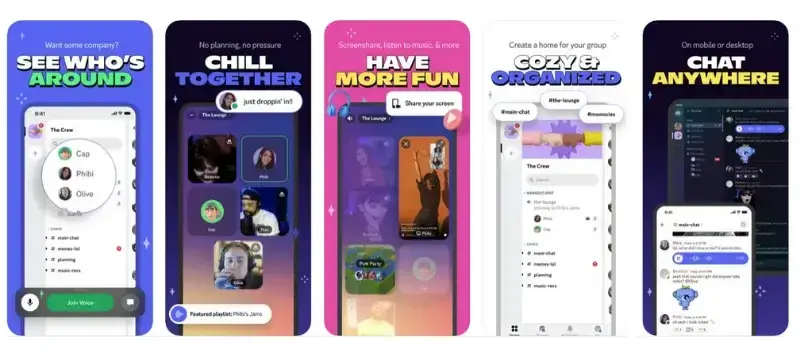
Discord is a communication platform designed for creating communities, offering text, voice, and video chat capabilities. It's popular among gamers for its easy-to-use servers, but it's also used broadly for various other online communities and groups.
Discord chose React Native for its iOS app to leverage the framework's ability to provide high performance while ensuring cross-platform functionality. They overcame initial challenges with frame drops and slow interactions by optimizing Flux store operations, refining React components, and enhancing main thread performance. Additionally, they focused on perceived performance and implemented RAM bundles, resulting in a significantly faster and more fluid app experience with improved battery efficiency.
Results of building a React Native mobile app
Through optimizing its RN implementation, Discord dramatically improved its app's performance on iOS. Key enhancements included optimizing Flux store operations, refining React components, improving main thread performance, and implementing RAM bundles. These efforts led to a noticeably faster, more responsive app with enhanced battery efficiency, demonstrating this programming language's potential for native-like performance in mobile applications.
3. Wix
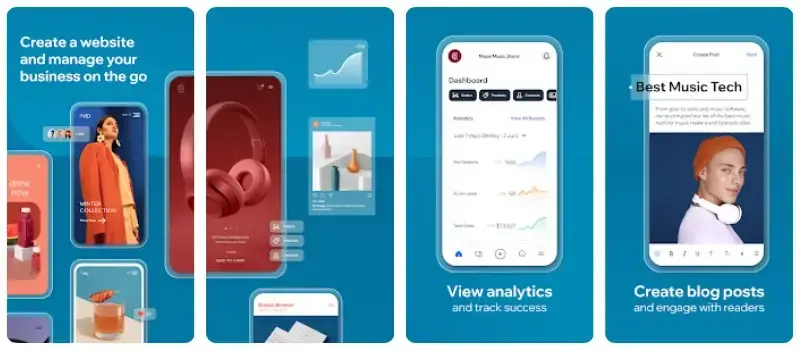
Wix is a cloud-based web development platform that allows users to create modern websites and mobile sites through the use of online drag-and-drop tools. It provides users with the ability to create custom, professional-looking websites without needing to know how to code.
Wix chose React Native for its mobile app to enhance cross-platform capability and leverage their expertise in the existing React technology. Their decision was influenced by the need for a unified development approach that could seamlessly integrate with their web platform. As an early adopter of React Native, Wix recognized the framework's potential for building efficient, cross-platform mobile applications. This choice was also a part of their commitment to open-source development, aligning with their technology strategy and long-standing involvement in the React Native community.
What Wix Has Accomplished with React Native:
Wix's achievements include building robust mobile applications and contributing significantly to the RN community. They have maintained over 30 RN open-source projects, which have gained widespread recognition and usage. This substantial contribution has led to Wix being recognized as an official React Native partner, highlighting their influence and commitment to the framework's development.
Wix's engineering team has shared their knowledge and insights through various platforms, including blogs and podcasts, helping to educate the broader developer community. Their innovative use of RN includes implementing features like shared element transitions and enhancing user experience in their mobile apps. These accomplishments demonstrate Wix's successful integration of this open-source software into its technology stack and its role as a leader in the development and application of this framework.
4. Walmart
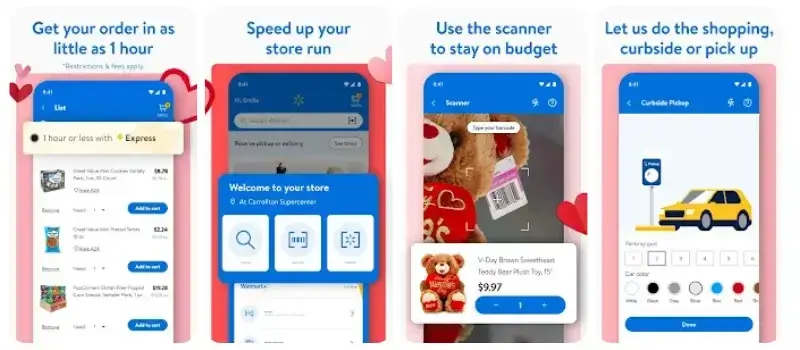
Walmart is one of the largest retail chains in the world and is notable for its scale, its role in the global supply chain, and its impact on local and international markets.
Walmart opted for React Native primarily for its cross-platform capabilities, which significantly enhanced productivity, code sharing, and time-to-market. This approach addresses the practical need for efficient development processes, enabling simultaneous development on iOS and Android with the same team, thus cutting labor costs.
Walmart's decision was influenced by the availability of skilled JavaScript developers and the minimal mobile-specific skills required for RN, which makes finding suitable labor more straightforward.
What factors led Walmart to choose RN?
With React Native, Walmart has been able to rapidly develop both initial and incremental features, thereby satisfying customer needs more quickly than competitors. Applications developed using RN at Walmart have demonstrated performance comparable to, and in some cases superior to, native applications.
Despite some challenges like the disparity between iOS and Android platforms and the complexities involved in upgrading RN versions, Walmart acknowledges the substantial benefits provided by the framework. The company strongly endorses this framework for its efficiency and effectiveness in mobile app development, considering it a valuable tool for both startups and large enterprises.
5. Shopify
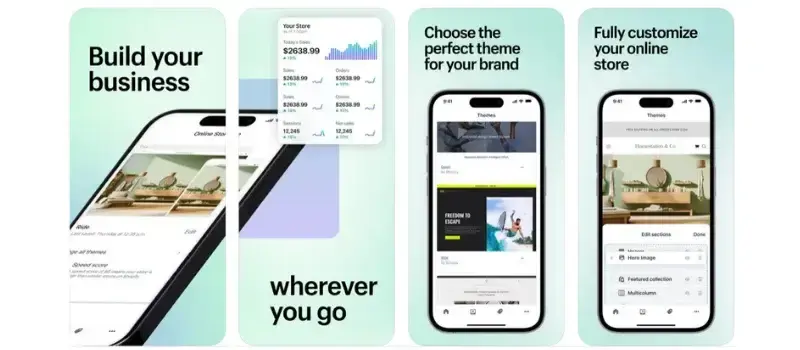
Shopify is an e-commerce platform that allows businesses to set up an online store and sell their products. It offers tools for merchants to manage products, inventory, payments, and shipping, enabling them to create a customized online storefront. The platform has over 1.75 million merchants and processes transactions worth $79.5 billion.
Shopify went with React Native for several strategic reasons. Firstly, using a single tech stack and tooling across the company provided substantial leverage, allowing Shopify to benefit from shared libraries, components, and tooling used in other apps within the company. RN's ability to enable higher productivity was another significant factor; for instance, the Shopify team found that they were twice as productive when using this framework compared to native development. This efficiency was noted across both iOS and Android platforms.
The decision was also influenced by Shopify's previous success with React on the web, making the knowledge transferable to mobile development. Furthermore, Shopify recognized the upward trend in RN's performance capabilities, which aligned with their long-term investment strategies in technology like Ruby, Rails, and Kubernetes. By adopting this software, Shopify aimed to unify their iOS and Android development onto a single stack, embracing the power of JavaScript and a reactive programming model for all client-side applications.
What Shopify Has Accomplished with React Native
Since adopting RN, Shopify has achieved significant milestones in mobile app development. They successfully rewrote one of their most popular consumer apps, Arrive (now Shop app), resulting in an app that shares 95% of its code between iOS and Android platforms. This rewrite led to fewer crashes on iOS compared to the native iOS app and facilitated the launch of an Android version, expanding the app's reach.
In addition to the Arrive app, Shopify also experimented with RN in other applications like Point of Sale and Compass, observing high levels of code sharing and performance improvements. Despite the initial challenges of a gradual adoption strategy, Shopify's switch to an "Iterative Porting" approach allowed for building new features in RN while migrating existing features in parallel. This strategic shift was underpinned by a comprehensive internal training program called RN Accelerator, which equipped its engineers with the necessary skills for React Native development.
6. Microsoft Office
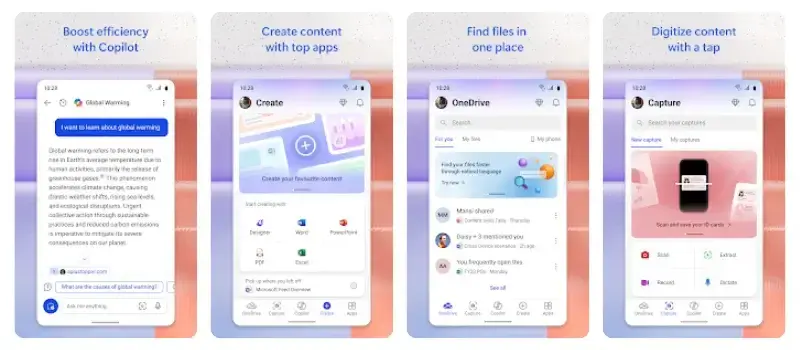
We've been all using Microsoft Office, the suite of productivity software that includes applications like Word, Excel, PowerPoint, and Outlook.
Microsoft chose React Native for developing parts of its Office suite to tackle the challenge of cross-platform development effectively. The key driver for this decision was the need for their applications, particularly those accessing Office 365 or Azure services, to operate seamlessly across various platforms, including Windows, iOS, and Android. RN offered a unified framework that allowed Microsoft to develop applications capable of running natively on multiple platforms, enhancing efficiency and broadening reach.
What Microsoft Office Has Accomplished with React Native:
By using this open-source software, Microsoft Office has achieved significant enhancements in cross-platform functionality and performance. This approach has allowed for native performance and code sharing across different platforms, leading to a more streamlined development process for applications like Word, Excel, and PowerPoint. Features such as the modern commenting experience in Word and the privacy dialog in Office apps are examples of RN implementations, demonstrating the framework's capability to deliver sophisticated functionalities efficiently across both mobile and desktop platforms
7. Bloomberg
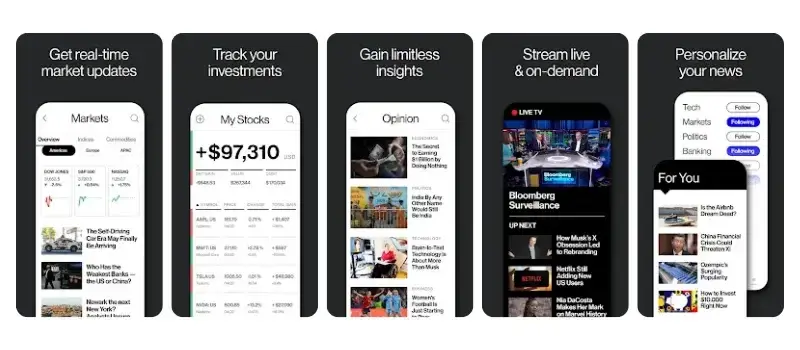
Bloomberg chose RN in 2016 to streamline their mobile app development for both iOS and Android platforms. This decision was aimed at overcoming the challenges of developing parallel versions for different operating systems, which often led to delays and repetitive work.
React Native offered a unified development process, enabling Bloomberg's developers to focus on one feature at a time, thereby enhancing efficiency and reducing development time.
Bloomberg Accomplishments with React Native:
The adoption of React Native allowed Bloomberg to introduce new features like personalized content, videos, and live feeds more seamlessly across both platforms.
This approach not only saved time but also improved the overall development workflow. By leveraging React Native, Bloomberg could efficiently roll out updates and new functionalities, thus enhancing the user experience on their mobile app.
FAQ - React Native apps
Is React Native suitable for all types of apps?
While RN is great for many types of apps, it may not be the best choice for every single project.
Our Tech Stack experts can guide you in the process of selecting the best code language for your project. Whether it is a simple app with basic functionality or a complex app with intricate features that may require a different approach. Contact us to start your tailored development journey.
Are there any downsides to using React Native?
While React Native offers many benefits, it also has some drawbacks. For example, React Native may not have access to all native features and APIs, which could limit the functionality of certain apps. In some cases, the performance of React Native apps may not be as fast as fully native apps.
Is it possible to build an app exclusively using React Native?
Absolutely, you can create a complete and functional mobile application using just React Native. This framework empowers developers to build apps by utilizing JavaScript, a widely-used programming language.
React Native encompasses a variety of features essential for mobile app development, such as user interface components, state management, network requests, and navigation handling. It's designed to access a host of native device functionalities, but in some instances, especially for highly specific or advanced device features, you might need to write some native code in Java, Kotlin, Objective-C, or Swift. Despite this, the vast majority of standard app development needs can be effectively met with React Native alone, making it a powerful and sufficient tool for most mobile app projects.
Does React Native remain relevant in 2024?
As of 2024, RN continues to be a highly relevant and efficient choice for cross-platform mobile app development. Its enduring popularity and utility stem from several factors.
Firstly, RN allows for the creation of apps for both Android and iOS using a single codebase, which significantly streamlines the development process and reduces costs.
Secondly, the framework's robust performance, combined with its ability to deliver a near-native user experience, makes it a preferred choice among developers and businesses.
Furthermore, React Native's vibrant community and ecosystem mean it is continually evolving and improving, with ample resources, libraries, and support available. This adaptability and resilience suggest that RN will maintain its position as a leading technology in the mobile app development landscape for the foreseeable future.





.webp)








